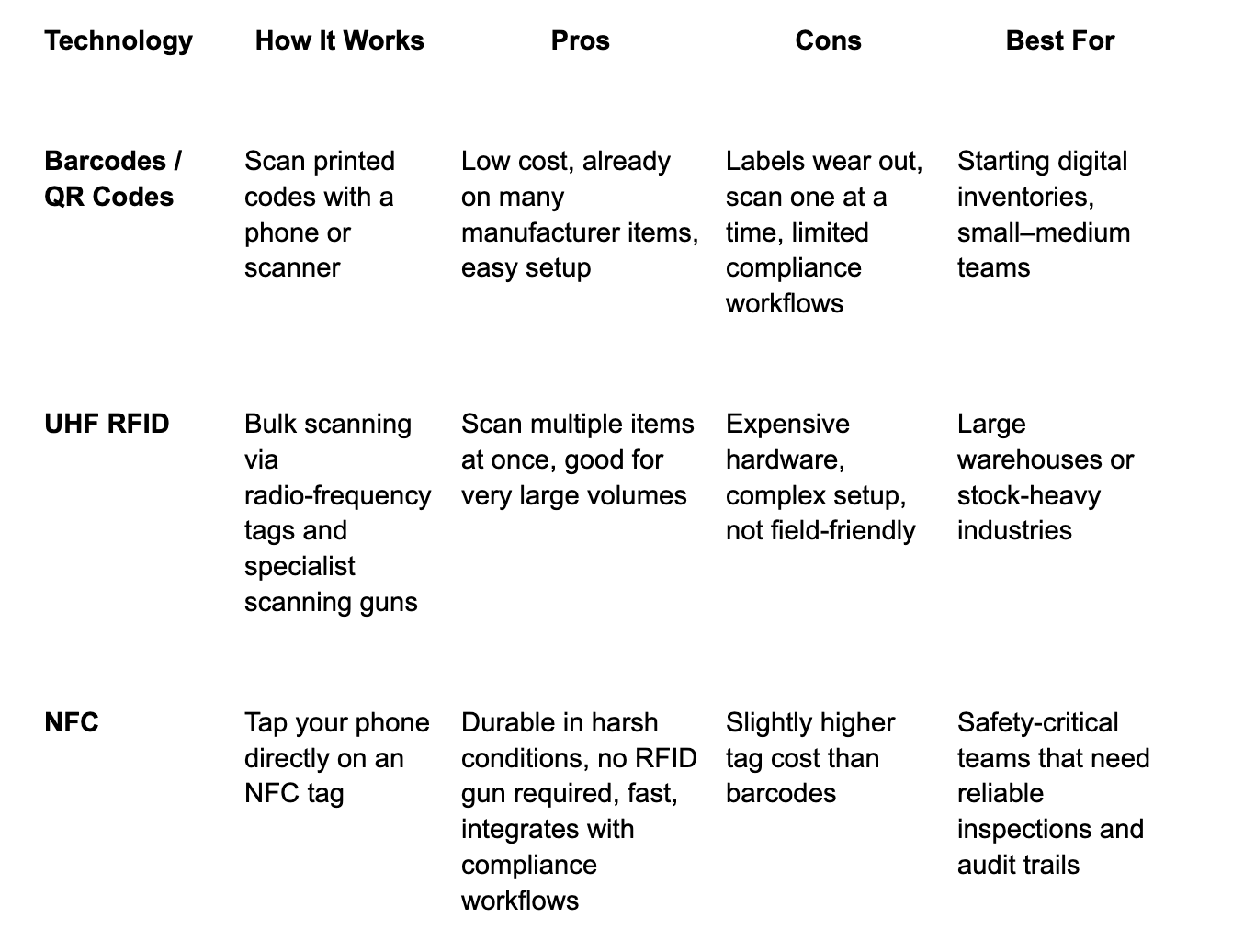When you’re managing safety-critical equipment - PPE, harnesses, ropes, helmets, or tools - tracking your gear isn’t just about stock levels. It’s about proving compliance, staying audit-ready, and keeping your team safe.
Many safety managers seek to track inventory using 2D codes - like barcodes or QR codes - because they are common on equipment straight from the manufacturer. But while they help, they’re not always the best tool for long-term compliance management. That’s where NFC technology and purpose-built inspection software provide a more reliable solution.
2D inventory tracking is the process of using barcode or QR labels to record and manage your gear. A simple scan - often with your phone - pulls up the item’s data and records. From there, you can check allocation, inspection history, and compliance status.
For many teams, barcodes are the starting point of digital equipment management. They reduce manual data entry and make it easier to build inventories compared to spreadsheets.
For more information on inventory tracking systems, check out our blog "Inventory Management Software & Tracking Systems: Everything You Need to Know."
QR codes or barcodes work well for retail or logistics. But in industries like rope access, construction, utilities, or mining, they can fall short:
That’s why many safety teams move beyond 2D codes and adopt NFC or UHF RFID audit tools designed for compliance-critical gear.
When choosing a compliance tracking system, here’s how the main technologies compare:For most safety equipment teams, NFC is the sweet spot: durable, reliable, and designed for compliance - but Scannable also makes it easy to work with existing barcodes.

Whether you’re tracking with barcodes, NFC or UHF RFID, the real goal is compliance. Safety teams must meet inspection requirements under LOLER, OSHA, and WHS regulations. That means keeping inspection records, generating audit trails, and proving that every piece of gear is safe to use.
The best compliance management systems integrate barcode or NFC scans into:
Scannable is designed for safety-critical industries where compliance is non-negotiable.
With Scannable, you get the best of both worlds: compatibility with barcodes and the power of patented NFC technology that’s purpose-built for safety compliance.
Barcodes are a helpful starting point for gear tracking - but for teams working in tough, high-risk environments, they aren’t enough on their own. NFC-based inspection systems provide the durability, accuracy, and compliance workflows that safety teams need.
With Scannable, you can scan, track, inspect, and prove compliance - all in one place.